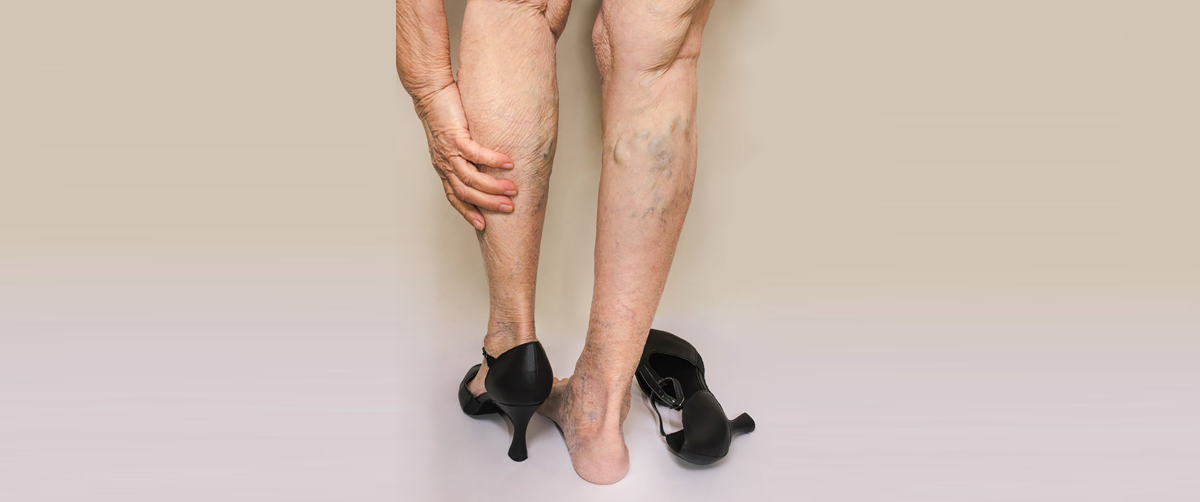Blood is circulated to our body parts through arteries and veins. ‘Varicose veins’ is a condition which causes overfilling of blood in the veins and makes them enlarged. This develops most commonly in the veins of the leg. These veins appear reddish or dark purple in colour and they become easily visible through the skin. They become sore, painful and swell causing them to easily felt over the skin of legs. They can also cause heaviness and discomfort.
-
What triggers varicose veins?
Changing lifestyle and insufficient physical activity can trigger varicose veins. Working in a sitting or standing position for long hours. This has resulted in an overall reduction of human physical activity and can have ill effects on your body and blood circulation.
Excessive body weight or obesity is another factor which can cause varicose veins. Fattening foods have high fat and carbohydrate content and less fibre. Intake foods coupled with lack of physical movement result in weight gain. Excessive weight develops pressure on the veins of your legs causing difficulty in the healthy flow of blood. This causes varicose veins.
Wearing high heels can aggravate your varicose veins. Low heeled shoes will ensure proper circulation in leg veins and exercise your calf muscles.
Frequently taking of birth control or contraceptive pills can result in the slowing of blood flow in your blood vessels. This can cause clotting and varicose veins. Research has shown that varicose veins are twice more common in women having contraceptive pills.
In women symptoms, varicose veins may be aggravated during their menstrual cycle and pregnancy.
Some other factors which can put you at risk of getting varicose veins are heredity, increasing age, weak or damaged veins developing blood clots.
Symptoms
Varicose veins may not cause any pain. Veins that are dark purple or blue in colour appear twisted and bulging; often like cords on your legs are some of the signs which will tell you that you are having varicose veins.
When varicose veins become painful, your legs may feel a heavy, burning or throbbing sensation along with muscle cramping and swelling in your lower legs. Pain may be worsened when sitting or standing and is relieved in lying down position. The veins may also itch sometimes.
In severe cases, there can be bleeding from your varicose veins. Swelling of the vein with colour changes and skin ulcers near the ankle are signs that the problem is serious and you need to see a vascular surgeon.
Release from pain
-
Elevating your legs
Elevating your legs above the level of your chest can give instant relief from pain. In a sitting position, you can stretch and place your feet on a table. If you are lying down you can place your feet on a pile of 2 or 3 pillows. This will help proper blood circulation towards the heart. Keeping your legs elevated for at least 15 minutes will decrease the pain and swelling.
-
Exercise
Short exercise to stretch your calf muscles a few times a day could be helpful in relieving pain. Flex your feet frequently, especially during long trips when your legroom is limited. If you are sitting or standing continuously in the same position, it is important to stretch every 30 minutes.
-
Compression stockings
Wearing Compression socks and stockings can act as support for healthy blood flow and prevent the condition to flare up.
-
Cold water
At the end of the day, you can put your feet under a stream of cold water. Cool temperatures will cause blood vessels to shrink and help reduce the heaviness and discomfort in your legs.
A cure for varicose veins
If you are experiencing severe symptoms, the treatment is mainly surgical. Recent surgical techniques are minimally invasive and do not involve big surgical cuts.
Endovenous Laser Treatment (EVLT) is an excellent treatment having the highest success rate. The doctor will confirm all your weak veins, using a Duplex Ultrasound Scan and will determine the best place to insert the catheter. Then the area will be numbed using a local anaesthetic. Once the area has become numb, a small cut is made on the skin for the catheter and a guide-wire to pass. An optical laser fibre is then passed through the catheter. The affected veins are sealed with the help of laser energy. The entire procedure is painless and approximately takes an hour. Patients can go home the same day and can resume routine activities within 15 days.
If you are looking for a cure for your varicose veins you should consult a vascular surgeon in your town. Dr. Abhilash Sandhyala is one of the best vascular surgeons in Hyderabad. He has successfully treated varicose veins for around 1500 patients.
You can visit Flow Vascular clinic at H.No: 2-22-298/2/A, Sree Krishna Diagnostic Center Building, 2nd Floor, Beside Kalamandir, KPHB Main Road, Kukatpally, Hyderabad. You can also book an appointment or call on (+91) 99896 49498,99590 33037.
Visit Flow Vascular Clinic to know more about the treatment options for varicose veins.

